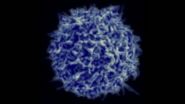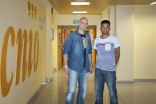Brain training using sounds can help aging brain ignore distractions
2014-11-20
(Press-News.org) As we age, we have an increasingly harder time ignoring distractions. But new research online November 20 in the Cell Press journal Neuron reveals that by learning to make discriminations of a sound amidst progressively more disruptive distractions, we can diminish our distractibility. A similar strategy might also help children with attention deficits or individuals with other mental challenges.
Distractibility, or the inability to sustain focus on a goal due to attention to irrelevant stimuli, can have a negative effect on basic daily activities, and it is a hallmark of the aging mind.
To address the problem, a team led by researchers at the University of California, San Francisco developed a training approach designed to help strengthen individuals' ability to suppress their attention to distracting stimuli.
The investigators used sounds at various frequencies as targets and distractors, with the goal of having trainees focus on the target frequencies while ignoring the distractor frequencies. In both aged rats and older humans, trainees implicitly learned to identify the target tone in each training session through reinforcement feedback, and then they had to continue to correctly identify that target tone amidst progressively more challenging distractor frequencies. Distractor frequencies were progressively made more similar to the target after trainees made correct discriminations, or they were made more dissimilar after incorrect discriminations. All the while, the target frequency was kept constant.
In both rats and humans, training led to diminished distraction-related errors, and trainees' memory and attention spans improved. Also, electrophysiological brain recordings in both rats and humans revealed that neural responses to distractors were reduced.
"We show that by learning to discriminate amidst progressively more challenging distractions, we can diminish distractibility in rat and human brains," says lead author Dr. Jyoti Mishra.
The approach could also be modified to help individuals struggling with a variety of distractions. "This same training could be generalized to more complex stimuli and across sensory modalities--such as auditory, visual, and tactile--to broadly benefit distractor processing in diverse impaired populations needing such training," says senior author Dr. Adam Gazzaley.
In addition to highlighting the therapeutic potential of this type of brain training to improve our ability to focus with age, it also shows that even in the aged adult, the brain is responsive to learning-based approaches that can improve cognition.
INFORMATION:
Neuron, Mishra et al.: "Adaptive Training Diminishes Distractibility in Aging across Species"
ELSE PRESS RELEASES FROM THIS DATE:
2014-11-20
CINCINNATI - Researchers have successfully targeted an important molecular pathway that fuels a variety of cancers and related developmental syndromes called "Rasopathies."
Reporting their results Nov. 20 in Chemistry & Biology, scientists at Cincinnati Children's Hospital Medical Center say they identified a class of lead compounds that successfully recognize a key target in the Ras signaling pathway - opening the door to future development of therapies that could make treatments more effective with fewer side effects.
Although still in the early stages of the development ...
2014-11-20
While investigating a rare genetic disorder, researchers at the University of California, San Diego School of Medicine have discovered that a ubiquitous signaling molecule is crucial to cellular reprogramming, a finding with significant implications for stem cell-based regenerative medicine, wound repair therapies and potential cancer treatments.
The findings are published in the Nov. 20 online issue of Cell Reports.
Karl Willert, PhD, assistant professor in the Department of Cellular and Molecular Medicine, and colleagues were attempting to use induced pluripotent ...
2014-11-20
VIDEO:
Researchers at the Salk Institute explain how a new technology, called ReBiL, can spot protein interactions more accurately, providing a new tool for cancer and other drug diagnostics.
Click here for more information.
LA JOLLA--For decades, researchers have struggled to translate basic scientific discoveries about cancer into therapeutics that effectively--and with minimal side effects--shrink a tumor.
One avenue that may hold great potential is the development of ...
2014-11-20
Researchers at the RIKEN Brain Science Institute in Japan have identified a key neuronal pathway that makes learning to avoid unpleasant situations possible. Published online in the November 20 issue of Neuron, the work shows that avoidance learning requires neural activity in the habenula representing changes in future expectations.
Learning to avoid threats is an essential survival skill for both humans and animals. To do so, animals must be able to predict a danger and then update their predictions based on their actions and new outcomes. Until now, the neural mechanisms ...
2014-11-20
Scientists have created the largest-scale map to date of direct interactions between proteins encoded by the human genome and newly predicted dozens of genes to be involved in cancer.
The new "human interactome" map describes about 14,000 direct interactions between proteins. The interactome is the network formed by proteins and other cellular components that 'stick together.' The new map is over four times larger than any previous map of its kind, containing more high-quality interactions than have come from all previous studies put together.
CIFAR Senior Fellow ...
2014-11-20
PHILADELPHIA - Human existence is basically circadian. Most of us wake in the morning, sleep in the evening, and eat in between. Body temperature, metabolism, and hormone levels all fluctuate throughout the day, and it is increasingly clear that disruption of those cycles can lead to metabolic disease.
Underlying these circadian rhythms is a molecular clock built of DNA-binding proteins called transcription factors. These proteins control the oscillation of circadian genes, serving as the wheels and springs of the clock itself. Yet not all circadian cycles peak at the ...
2014-11-20
Harvard Stem Cell Institute scientists at Brigham and Women's Hospital have found the cellular origin of the tissue scarring caused by organ damage associated with diabetes, lung disease, high blood pressure, kidney disease, and other conditions. The buildup of scar tissue is known as fibrosis.
Fibrosis has a number of consequences, including inflammation, and reduced blood and oxygen delivery to the organ. In the long term, the scar tissue can lead to organ failure and eventually death. It is estimated that fibrosis contributes to 45 percent of all deaths in the developed ...
2014-11-20
Liver cancer is one of the most frequent cancers in the world, and with the worst prognosis; according to the World Health Organisation (WHO), in 2012, 745,000 deaths were registered worldwide due to this cause, a figure only surpassed by lung cancer. The most aggressive and frequent form of liver cancer is hepato-cellular carcinoma (HCC); little is known about it and there are relatively few treatment options.
Researchers from the Spanish National Cancer Research Centre (CNIO), have produced the first mouse model that faithfully reproduces the steps of human HCC development, ...
2014-11-20
Mouse cells and tissues created through nuclear transfer can be rejected by the body because of a previously unknown immune response to the cell's mitochondria, according to a study in mice by researchers at the Stanford University School of Medicine and colleagues in Germany, England and at MIT.
The findings reveal a likely, but surmountable, hurdle if such therapies are ever used in humans, the researchers said.
Stem cell therapies hold vast potential for repairing organs and treating disease. The greatest hope rests on the potential of pluripotent stem cells, which ...
2014-11-20
A recently discovered protein complex known as STING plays a crucial role in detecting the presence of tumor cells and promoting an aggressive anti-tumor response by the body's innate immune system, according to two separate studies published in the Nov. 20 issue of the journal Immunity.
The studies, both from University of Chicago-based research teams, have major implications for the growing field of cancer immunotherapy. The findings show that when activated, the STING pathway triggers a natural immune response against the tumor. This includes production of chemical ...
LAST 30 PRESS RELEASES:
[Press-News.org] Brain training using sounds can help aging brain ignore distractions



